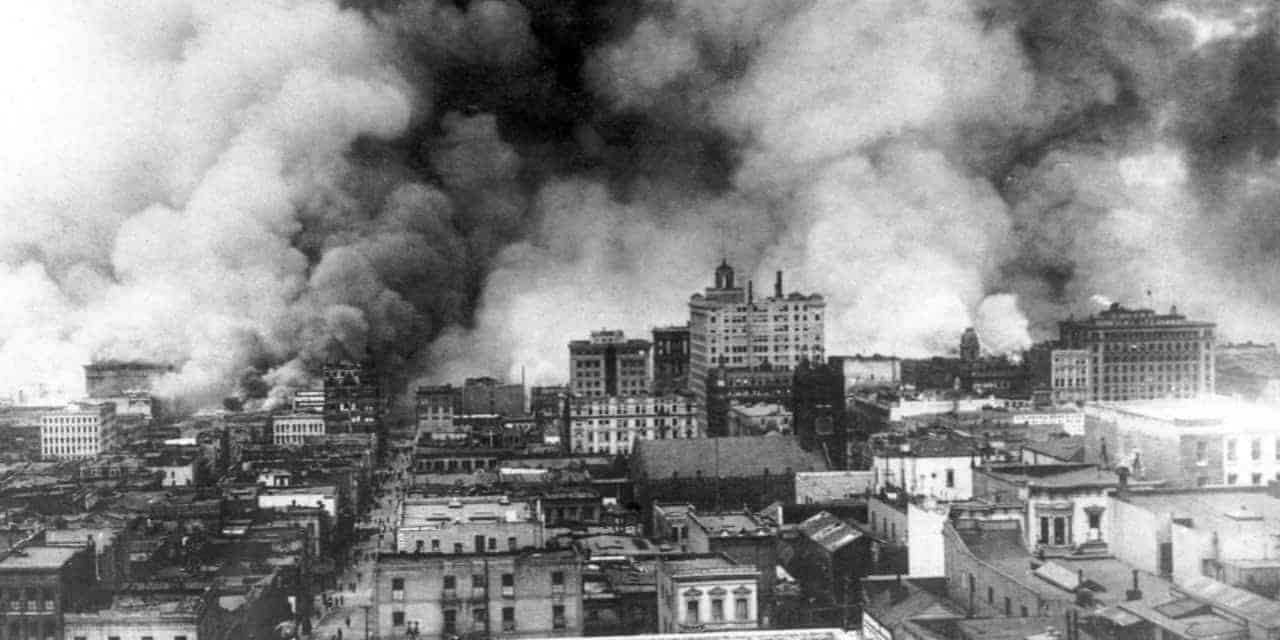Fire can be a devastating thing. Flames have no respect for class, wealth, or power and their ferocity is often the whim of the weather, circumstance and pure luck. While fires can be catastrophic, they present the opportunity to build again from the ground up, replacing the scorched earth with something new and hopefully something better. Here we talk you through the five fires that changed America, from their destructive beginnings to the ways in which Americans came together to rebuild after them.

1 – The Burning of Washington, August 1814
Our first conflagration is our only deliberate arson. The Burning of Washington was a seminal moment in the young United States of America and a turning point in the creation of a uniquely American national identity. The context of the fire is more important than the blaze itself, with the burning of the nascent national capital essentially a symbolic act.
The War of 1812 was an extension of the Napoleonic Wars in Europe and the importance of it on the wider world scale pales next to the conflicts taking place in Old World at the time. For the United States, however, it was of paramount importance. Many historians have later described it as the “Second War of Independence”. While Britain was vanquished and independence secured in the late 18th century, there was still an ever-present threat from the north, where the old enemy continued to control what is now Canada. They had long conspired to undermine the newly established government in Washington by siding with Native American tribes who sought to halt the American drive to the West.
Washington, named for the first President and founded in 1790, had been the seat of power in the United States since 1801. The idea of a designated, purpose-built national capital was relatively new and untried, but the symbolism of Washington as a city was not lost of the British. It was into this city that they marched on the 24th August 1814, taking it as a spoil of victory following the Battle of Bladensburg, a defeat that would later be described as “the greatest disgrace ever dealt to American arms” because of the free run at the capital that it afforded to the British.
Moreover, the Americans had riled the British by raiding Port Dover, a British stronghold on the shores of Lake Erie in May of 1814. US soldiers has burned and looted that town, and with it close to the memories of the British commanders at Bladensburg, they decreed that the same would take place to the new American capital. Anticipating the attack, President James Madison withdrew his government to the small Maryland town of Brookeville. The soldiers entered Washington and proceeded to set the Capitol Building, the White House and the Library of Congress, which lost 3,000 books.
Washington DC burned for a whole day, but in a stroke of luck, a huge storm arrived on the evening of August 25th and put the majority of the flames out. The force of the storm was such that It was said to have lifted cannons clean off the ground, while the weather event claimed more victims – both British and American – than the fire did. Still, history has recorded it as The Storm That Saved Washington, as it forced the British to leave.
The symbolism of the fire was not lost, however. The British had proven to the Americans that they still had the power to hit right at the heart of the new state’s government. The war would continue for six more months, with no side taking any territory in the peace deal that was signed at Ghent in 1815. The effect on the US was profound however: never again would Washington be taken and measures were put in place that turned the irregular militia of the new nation into the US Army that is now the largest in the world.

